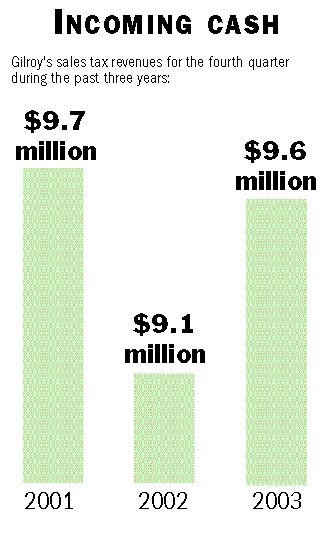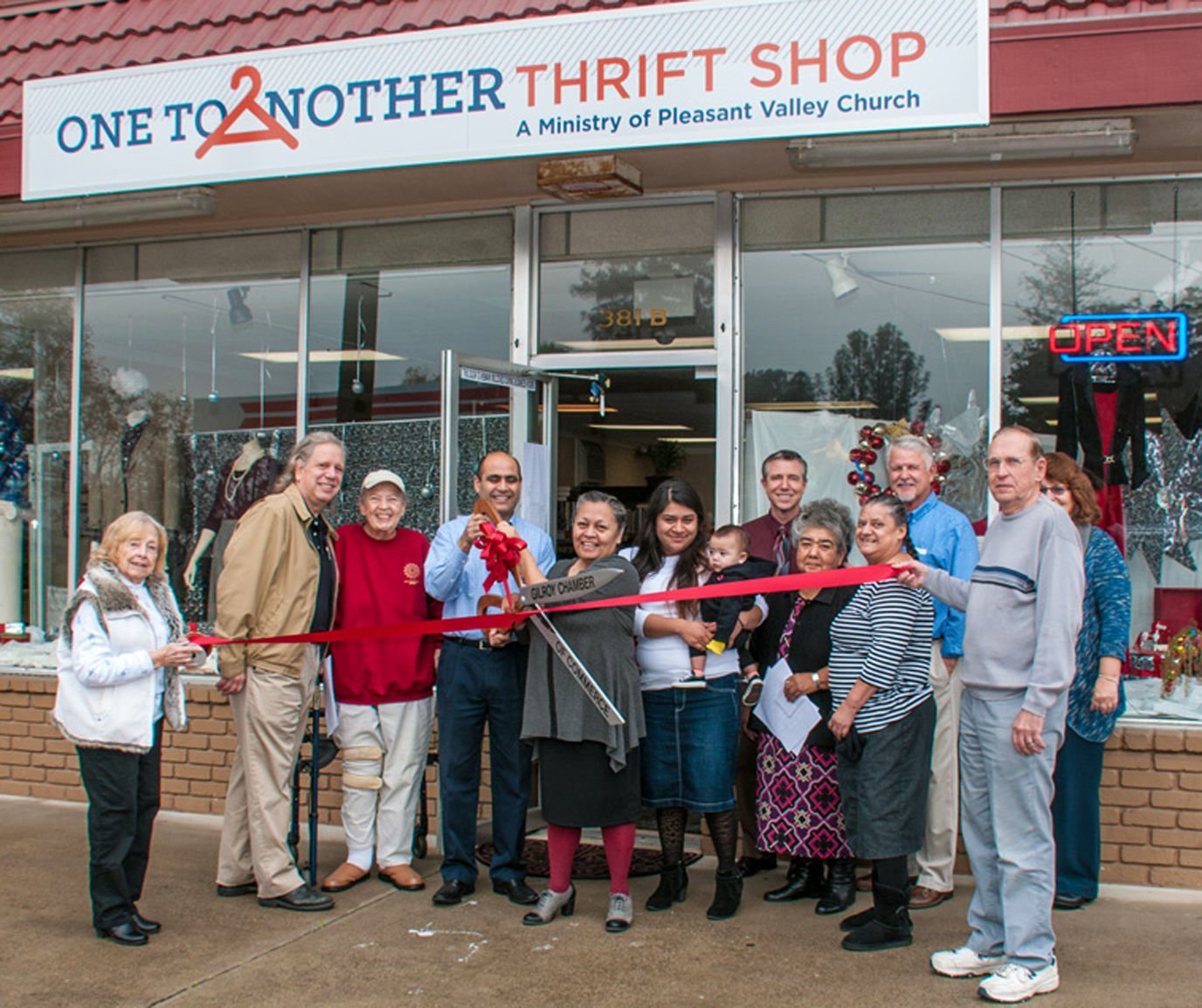GILROY
– Thanks to stores like Target, Costco, Best Buy and Lowe’s,
Gilroy’s sales tax revenue jumped more than 10 percent in the
fourth quarter of 2003 when compared with data from the same
quarter in 2002.
GILROY – Thanks to stores like Target, Costco, Best Buy and Lowe’s, Gilroy’s sales tax revenue jumped more than 10 percent in the fourth quarter of 2003 when compared with data from the same quarter in 2002.
And on an annual basis, Gilroy’s sales tax revenue is on an upswing.
In all of 2003, Gilroy collected nearly $9.6 million in sales tax, compared with less than $9.1 million in 2002. However, retail sales still have yet to surpass a high set in 2001 of nearly $9.7 million, state data shows.
“We’ve dipped down compared to 2001, but we’re coming back up,” City Treasurer Michael Dorn said.
Officials say the city’s most recent sales tax numbers – which cover sales made from October through December 2003 – indicate that big-box retail stores are paving Gilroy’s way out of the regional and statewide recession.
“Because of our economic development program, Gilroy has not suffered nearly as much as other cities in California,” Dorn said.
Sales tax is the backbone of city finances, making up nearly half of Gilroy’s general fund. As the state often deals with its financial shortfalls by siphoning local money into Sacramento, increased sales tax becomes even more significant.
Gilroy’s economic development director, Bill Lindsteadt, is pleased with the recent data. However, Lindsteadt said he’ll be more pleased when 2004 totals come in.
That is when sales tax collected from all the recently and soon-to-be opened retail stores and restaurants will come in. Revenue from 2004 will include totals from popular establishments such as Pier 1, Chili’s and Bed Bath & Beyond, just to name a few.
“I’d say we’re going to bust 2003 by a good 15 percent, maybe even 20 percent,” Lindsteadt said. “It could happen.”
Gilroy already is outpacing – based on the fourth quarter of 2003 – scores of cities its size and larger across the region. Only East Palo Alto, which opened an Ikea furniture store late last year, saw a significantly larger amount of retail sales growth.
While Gilroy’s sales tax revenues grew 10 percent from fourth quarter 2002 to fourth quarter 2003, East Palo Alto had a 58 percent jump in its sales tax revenues.
Meanwhile, Morgan Hill saw its sales tax revenues dip more than 9 percent in the fourth quarter of 2003 when compared to the fourth quarter of 2002. Watsonville dropped 1.2 percent during that time frame.
According to the state’s figures, Gilroy’s sales tax increase is largely due to “department stores” such as Target and “building and material” stores like Lowe’s. Those two categories are listed in state documents as the two largest growth areas for the city.
Eric Leins covers city politics for The Dispatch. He can be reached at 847-7158 or by e-mail at er***@************ch.com.















